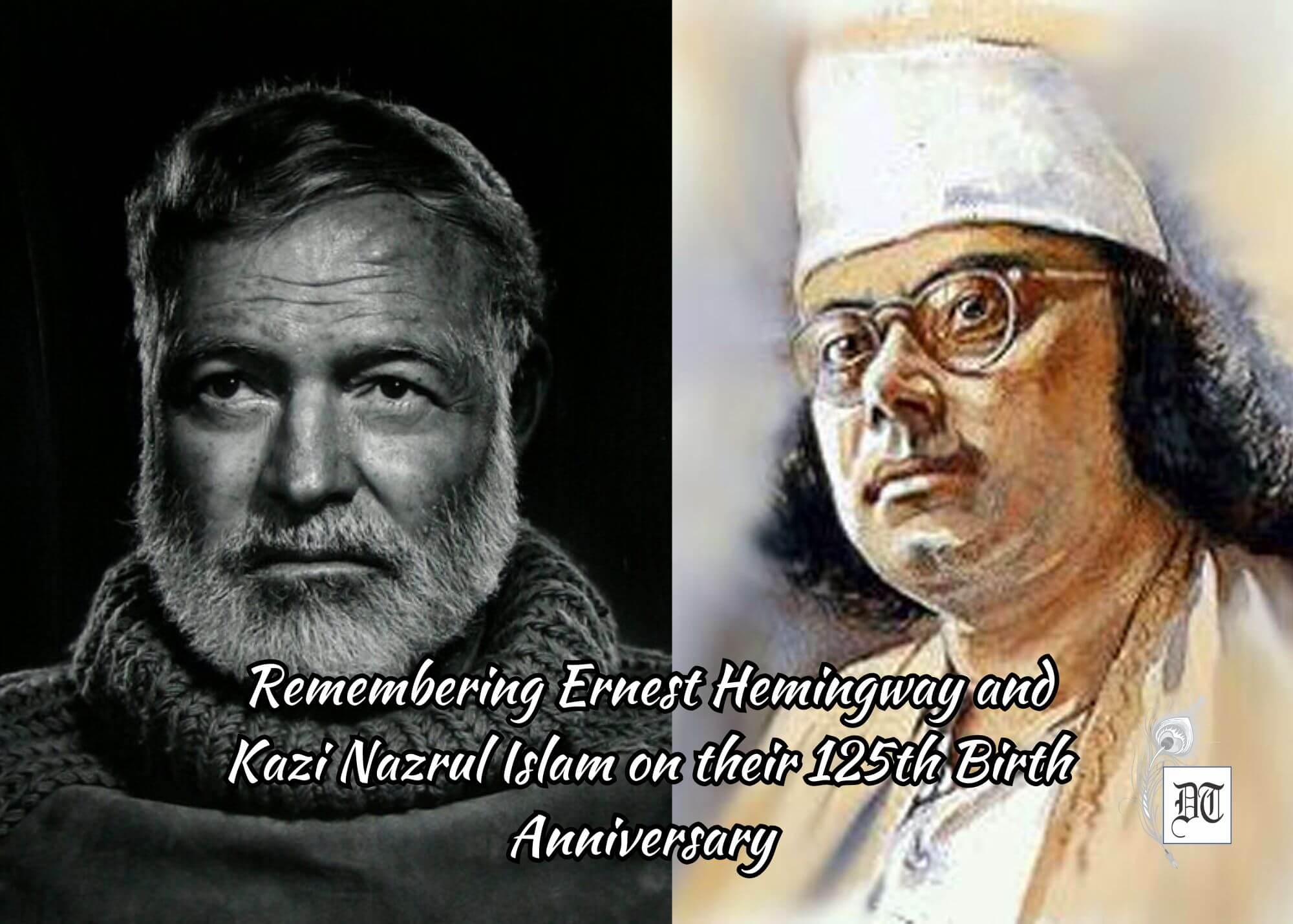
It was in the month of May, Lovita was in Shillong with a sole sojourn to be there, where Tagore lived, 99 years ago (first time in 1919). She walked the aka-beka (winding) roads of Laithumukhra then walked uphill Laban. The pine trees are still there tall but older. Under whose shades walked the poet laureate. She documents Bard’s journey and his stay, clicking photographs, as Special Feature. A Different Truths exclusive.
“Who are you, reader, reading my poems a hundred years hence? I cannot send you one single flower from this wealth of the spring, one single streak of gold from yonder clouds. Open your doors and look abroad. From your blossoming garden gather fragrant memories of the vanished flowers of a hundred years before. In the joy of your heart may you feel the living joy that sang one spring morning, sending its glad voice across a hundred years.”
“Once we dreamt that we were strangers. We wake up to find that we were dear to each other.” ~ Rabindranath Tagore, Stray Birds
It was in the month of April Tagore arrived in Shillong fell in love here and stayed throughout May and June.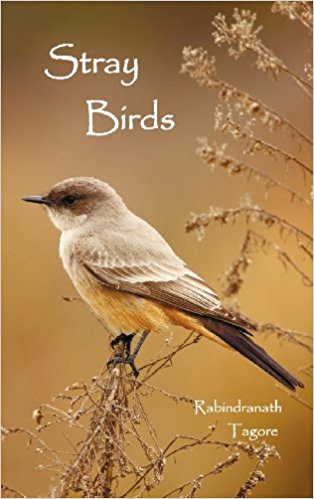
It was in the month of May, I was in Shillong with a sole sojourn to be there, where Tagore lived.
I walked the aka-beka roads of Laithumukhra then walked uphill Laban. The pine trees are still there, standstill, unmoved, stronger rooted tall but older, under whose shades walked the Poet Laureate.
I walked the same path, feeling and visualising poems from Gurudev’s Song offerings – The Gitanjali, The Gardener, and Stray Birds.
“Clouds come floating into my life, no longer to carry rain or usher storm, but to add colour to my sunset sky.”—Verse 292, Stray Birds, 1916, as I walked towards Laban and clouds hovering on the clear blue sky.
Yet, it was in the month of April and words from T.S. Eliot’s Wasteland was merging along, penetrative depth of classic Eliot’s topsy-turviness of feelings and emotional interplay:
April is the cruellest month, breeding
Lilacs out of the dead land, mixing
Memory and desire, stirring
Dull roots with spring rain.
Winter kept us warm, covering
Earth in forgetful snow, feeding
A little life with dried tubers.
I too thought about it how come April is cruel? How can April be cruel? It’s significant spring climacteric with flowers and love in the air.
Spring, when defined in this manner, can start on different dates in different regions. Thus, in the US and UK, spring months are March, April, and May, while in New Zealand and Australia, spring conventionally begins on September 1 and ends November 30.
This theory made me feel different seasons of different countries with a different truth. I felt like I am “All the seasons” climate of opinion may differ.
Such magical poems had a transformative impact, from the Poet Laureate that stirred the esoteric reality 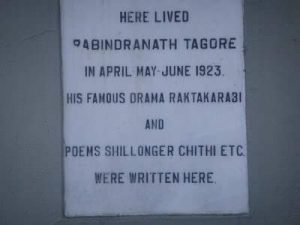 in me too, that being in the North East states of India and from the last frontier of India, it’s not a joke to get absorbed in the immensity of omniscient of the ocean of song offerings.
in me too, that being in the North East states of India and from the last frontier of India, it’s not a joke to get absorbed in the immensity of omniscient of the ocean of song offerings.
Magic is right here. He left magic here.
Such is the Creator of elegant prose and magical poetry, who we lovingly address as “Gurudev” as a sobriquet. Guru means Great Teacher and Dev means God.
Who discovered through his poems “Living God within” and “man within the heart”?
A comme il faut comely title by Mahatma Gandhi to Tagore as “Gurudev” or as “The Great Sentinel”.
Which is a boon by the bond between two legends Rabindranath Tagore and Mohandas Karamchand Gandhi. As a tribute and as a mark of respect for each other. In light of taking everything in mind, Rabindranath Tagore called Mohandas Karamchand Gandhi as Mahatma (Maha mean Great and Atma means soul).
Timelines of Memories and Memoirs
The first time, he was in Shillong on 11th October 1919 stayed for 21days. He lived in a house named Brookside, surrounded by pine and Deodar trees.
He fell in love with Shillong. He felt breath of fresh air here. He found his much-needed solace. He loved the comforts of confinement. The only place he would go to pray is the Shillong Brahmo Samaj.
Maybe the disturbances caused to the nation by Rowlatt Act, where Britishers introduced to restrict every protesting Indian.
22nd December 1918 the foundation stone of Viswa Bharati was laid. An untiring effort to glorify Santiniketan a citadel of knowledge and culture. He even became a teacher himself, to inculcate the 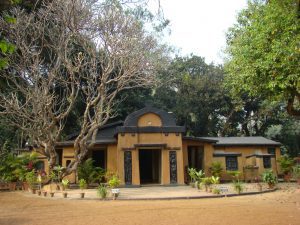 wisdom in the pupils, he introduced Guru-Sishya parampara, taught students under trees, close to nature a different and unconventional education system, unlike, the education system for Gurudev found it unnatural, he felt children suffer in such system. Hence, the quote by Gurudev, “Don’t limit your child to your learning for they are born in another time.” On 13th April 1919, in the Jaliawala Bagh Massacre, 400 people were brutally gunned down by General Dyer.
wisdom in the pupils, he introduced Guru-Sishya parampara, taught students under trees, close to nature a different and unconventional education system, unlike, the education system for Gurudev found it unnatural, he felt children suffer in such system. Hence, the quote by Gurudev, “Don’t limit your child to your learning for they are born in another time.” On 13th April 1919, in the Jaliawala Bagh Massacre, 400 people were brutally gunned down by General Dyer.
All these must have drained his spirit and strength. He indeed needs a fresh breath of air to carry on his vision.
Though those were the days when reaching this invigorating, life-giving hill station was hardly a favourable affair. Today, the roads are smooth and shapely.
How Tagore travelled in that rugged terrain from Guwahati to Shillong covering the distance of hundred kilometres will remain a mystery, mystical too. But, the magic in his work proved that Tagore was a risk-taking headstrong adventurous poet too.
The poet who travelled thirty countries on five continents, yet his love for the land is different, he fell in love at first sight, Shillong ought to a shibboleth. A slogan of the soul, while soul-searching poetries and stories soul-stirring.
Tagore, generally presumed that he travelled from Guwahati in some private vehicle, in his memoirs, described the winding road to Shillong as ‘aka-baka-poth’ (winding road).
There were deep forest and dense fog on either side of the road. He celebrated each turn of the mountain road, there was almost no road, breathing deeply the aromatic emanations from the pine trees. Charmed 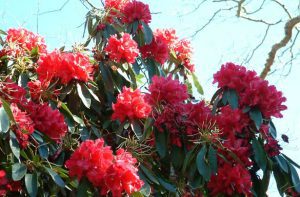 by the union of unknown wildflower flowers in the evergreen Khasi hills, yet he finds his favourite climate indicator wildflower Rhododendrons of Shillong in his poem, Rhododendron Uccha Sakhaye (Rhododendrons grow the tallest)
by the union of unknown wildflower flowers in the evergreen Khasi hills, yet he finds his favourite climate indicator wildflower Rhododendrons of Shillong in his poem, Rhododendron Uccha Sakhaye (Rhododendrons grow the tallest)
Poetry with scientific intervention. Rhododendrons are climate indicator wildflower that may sound like vers libre. The transition from verification to the verisimilitude of facts and figures.
Nevertheless, the Poet Laureate in his later the life developed interest and passion that expanded to science. His meeting with Elbert Einstein as solicited in Visva-Parichay, a 1937 collection of essays. His respect for scientific laws and his exploration of biology, physics, and astronomy informed his poetry, which exhibited extensive naturalism and verisimilitude.
He wove the process of science, the narratives of scientists, into stories in Se (1937), Tin Sangi (1940), and Galpasalpa (1941).
The eternal tourist that Tagore was amplified in his verse ‘Shillonger Chiti’ (letter from Shillong):
“Gormi Jokhon tutlo na aar pakhar haowa Sarbote – thanda hote daure elum – Shillong namak porbote”
When Rabindranath Tagore came to Shillong for the first time, in 1919, without any formal invitation, he was already a renowned global celebrity. By that time, he was not only the Rabi Babu of Bengal but also the famous Nobel Laureate Rabindranath Tagore.
Second visit to Shillong in April 1923.
A perfect summer vacation in search of spring. He stayed throughout May and June, after the bitter experience of mechanical lifestyle and pattern, greed of capitalist society, in his more than a-year-long 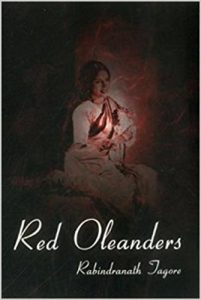 voyage to Europe and America that he depicted the side effects of modern mechanical life in his drama, “Red Oleanders” (Raktakarabi) written in Jeet Bhumi, in Shillong.
voyage to Europe and America that he depicted the side effects of modern mechanical life in his drama, “Red Oleanders” (Raktakarabi) written in Jeet Bhumi, in Shillong.
On the 9th of June 1923, Tagore wrote his famous poem on Shillong, ‘Shillonger Chiti’, which is truly an ode to Shillong. Every word, every verse of this poem is a literary expression of how deeply Tagore’s poetic sense captured the innate natural beauty of Shillong.
All poem is an expression, in true spirit, how passionately Tagore loved the beauty of nature.
During his stay at Jeet Bhumi, Tagore was invited and honoured by the Queen of Mayurbhanj, Srimati Sucharn Debi. However, perhaps the most important function during this visit was the celebration of the poets birthday on 25th Baishaka (8th May that year) in the bungalow of Dr. Bidhan Chandra Roy in Kenchestrace, which has now become a circuit house. The 65th birthday of Tagore was celebrated in Shillong in the year 1923, which was graced by Tagore himself.
Every event he left here. Every poem, his every word followed my mind, without fear, as I walked alone, in this half part of his universe of poetries, creating, re-creating composing my own verse and Cherishing, uttering words from his verse:
I’m lost in the middle of my birthday. I want my friends, their touch, with the earth’s last love. I will take life’s final offering, I will take the human’s last blessing. Today my sack is empty. I have given completely whatever I had to give. In return, if I receive anything—some love, some forgiveness—then I will take it with me when I step on the boat that crosses to the festival of the wordless end.
Shillonger Chithi, Shesher Kobita, a novel. The Last Letters Tagore wrote in deep serenity and much-needed isolation and space he needed he felt here in the abode of clouds. He would confine himself in the warmth of the cocooned cool air of Shillong and hardly would he go out except for prayers in Shillong Brahmo Samaj that was established in the year 1884.
The Poet Laureate wrote poems as an eight-year-old. At the age of sixteen, he released his first substantial poems under the pseudonym, Bhānusiṃha (Sun Lion).
The youngest of thirteen surviving children, Tagore (nicknamed “Rabi”) was born on 7 May 1861 in the Jorasanko mansion in Calcutta to Debendranath Tagore (1817–1905) and Sarada Devi (1830–1875) proved true as the Sun Lion, also to the people of purvauttara, the Vastu Shastra directions, the land of rising Sun. North Eastern eight states of Arunachal Pradesh, Meghalaya, Assam, Sikkim, Tripura, Manipur, Mizoram, Nagaland, and Tripura eugenically and euphemistically as “One brother and seven sisters” states of North East India.
Rabindranath Tagore visited Shillong thrice. No other hill station or resort had that privilege and Tagore loved Shillong so much that when he went back, he wrote his masterpiece ‘Sesher Kabita’ a novel whose total background was Shillong. (When the heat of summer could not be met even with fans and soft drinks, I rushed to the hills of Shillong)
Every word Tagore created in his verse, the universal law of co-existence thrives. A line, “Trust love even if it brings sorrow. Do not close up your heart.” Rabindranath Tagore, The Gardener, teaches us to nurture love. It’s trust that bridges the gap.
Further, thickening the thinning chicken neck, with his compositions, singing in the spirit of oneness the National Anthem not only to India but furthermore, furthering and uniting the spirit of brotherhood of two immediate neighbours, two nations India and Bangladesh and inspiring the National Anthem of Sri Lanka too with his music.
Next day, I was en route to the international border, Dawki.
I have witnessed this beautiful union of nations, standing on ‘no man’s land’, at Dawki. “Amar Sonar Bangla” sung by people from Bangladesh and “Jana Gana Mana” sung by Indians. And, I sang the 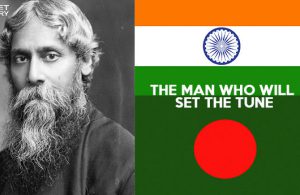 National Anthem of both the nations composed by one poet, Noble Prize Laureate Rabindranath Tagore.
National Anthem of both the nations composed by one poet, Noble Prize Laureate Rabindranath Tagore.
He was right here, and, as every person, as Shakespeare of India.
“Every person is worthy of an infinite wealth of love – the beauty of his soul knows no limit.” ~ Rabindranath Tagore
He must have said many times as a farewell song to every person here as Khublei Shibun!
The most tasteless fact, the nerdy nerve-racking thing were the photographs I clicked. The stories in the photographs have the imageries that hurt. The words on broken plaques, “He lived here in October 1919” will be the sore-point of the last farewell letters that shall remind us of human blunder, the proverbial phrase “to err is human, to forgive how divine that expose the nerve that poet Alexander Pope may need gusto in the gut to rethink and convey through his poem – an essay on criticism.
“We read the world wrong and say that it deceives us.” What we derive is a sense and sensibilities, the noble notion of noble-minded men. We learn to read the world as not wrong that’s when things are in reality not wrong. Deceive, we too shall receive. Nothing should mislead mankind.
The Great Connection: Lakshminath Bezbaruah and Rabindranath Tagore
Romantically enough, on a boat anchored in a sandbank of the river Brahmaputra at Ahatguri, near Nagaon on a Lakshmi Purnima (full moon night of autumn festival celebration Asvin), in November 1868, Sahityarathi – charioteer of literature, the stalwart of time Lakshminath Bezbaruah was born. He was a contemporary of Tagore – about seven years younger to the Nobel Laureate.
Interestingly, marital ties have not only connected the families but the two states to the richness of literature and cultural heritage. Lakshminath Bezbaruah married Pragya Sundari Devi, a niece of the poet Rabindranath Tagore. Though Bezbaruah faced stiff opposition when he decided to marry Pragya Sundari Devi, the granddaughter of Maharshi Devendranath Tagore, according to Brahmo rites. He even refused to accept the Rs. 10,000 dowry from the Tagore family.
Pragya Sundari Devi was the second daughter of Maharshi Debendranath Tagore’s third son Hemendranath Tagore (1845- 1885). Pragya Sundari was the first to write a cookbook Aamish O Niramish Aahar (Nonveg and Veg Food) in three volumes, which became immensely popular. She also used to edit a magazine, Punya. Pragya Sundari and Laxminath’s granddaughter, Rita Devi is a famous Odissi dancer.
Tagore visited the then undivided Assam thrice — in 1919, 1923 and 1927. Undivided Assam had Shillong as its capital. In 1874, on the formation of Assam as the Chief Commissioner’s Province, because of its convenient location between the Brahmaputra and Surma valleys.
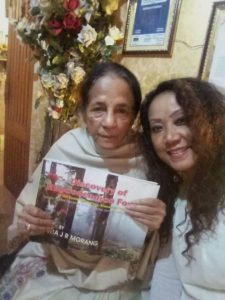
Undoubtedly, the main reason being the climate of Shillong was much cooler and convenient than tropical India. Shillong was the capital Assam during the British regime and later till a separate state of Meghalaya was formed. The then British civil servant of the East India Company, agent of the Governor-General North East Frontier, David Scott, impressed by the favourable cool climate of Khasi Hills, negotiated with the Syiem of Cherra, in 1829, for a sanatorium for the British.
And, Shillong remained the capital of undivided Assam until the creation of the new state of Meghalaya on 21 January 1972, when Shillong became the capital of Meghalaya, and Assam moved its capital to Dispur in Guwahati. That’s the tale of two historic hill city and plain city with rich heritage and stories of unification of the past that stood ordeal of time and stood still to inspire this generation from digital age that’s heading towards embracing Artificial intelligence that’s opposite to natural learning. Time will tell. The tales from Tagore time still evokes.
Tagore is worshipped here in Assam and has remained an ideal figure for the Assamese litterateurs.
Tagore also met a poet and folksong writer Hasan Raja during one of his visits to Assam. Tagore wrote in Religion on Man, “The sky and earth borne of my own eyes. The hardness and softness, the cold and heat are the products of mine own body.”
Unfortunately, like many great writers, Bezbaruah was denied the recognition he deserved during his lifetime. The response to all 25 books he published, before 1930, was met with little or no appreciation from the general public. Even today, very little of his prolific output is really appreciated. The house in Calcutta where he lived lies in ruins. According to critics and biographers, Bezbaruah was the Victor Hugo of modern Assamese literature. He pioneered and glorified it in the era of romanticism.
The Charioteer of literature Bezbaruah’s O mûr apûnar dekh in Assamese is from among the finest poems created by him. It was first published in 1909 in an Assamese magazine named Bahi (Flute). The song is also included in Fin Kadamkali, authored by him. It was officially adopted as the Assam’s state song in 1927 at Ôxôm Satrô Xônmilôn (Assam Student Conference) held in Tezpur.
Calcutta’s literary and liberal life gave a tremendous boost to the career of Bezbaruah. He established the Asamiya Bhasaunnati Sadhini Sabha, in 1889. During this time the famous Assamese periodical Jonaki was launched under the leadership of Chandra Kumar Agarwala. His first satirical pieces appeared in the pages of Jonaki, in the second year of the journal, he wrote extensively under the pseudonym Kripabar Barua.
Bezbaruah’s Calcutta Sojourn
He joined the General Assembly College in the city and profoundly influenced by the intellectual and cultural events of those days. Here he first came into contact with Bengali and English literature. During his college days, Bezbaruah was engrossed in the works of great writers right from Rabindranath Tagore, Shelley, Byron and Keats to many a poets and writers of that period.
Tagore also visited Tripura seven times and was very close to Tripura’s royal family, the royal family entertained him with Manipuri dance. Tagore was so enchanted by the dance that he took a Manipuri dance teacher, Nabakumar Singha, to Santiniketan to acquaint its students with Manipuri culture and help them to learn the dance form. That was a significant event for Santiniketan. Prabhat Kumar Mukhopadhyaya, in the third part of Rabindra Jivani, said because of Singha’s presence, the dance form in Santiniketan took a new form.
Tagore’s on his visit to Guwahati met students from Cotton College and connected with few poets and writers like Satyanath Bora, Hemachandra Goswami, Bholanath Das and Banikanta Kakoty.
The words on the plaque says, “Here lived Rabindranath Tagore in October 1919” and few lines from a poem of his: “Bipode more raksha koro/E nohe mor prarthona/Bipode aami na jeno kari bhoi (Let me not pray to be/Sheltered from dangers/But be fearless in facing them)”.
Sharmila Tagore, we have only known her as an actress, a Padma Bhushan awardee, wife of Mansoor Ali Khan Pataudi, the Nawab of Pataudi and former captain of the Indian cricket team and mother of Saif Ali Khan and Soha Ali Khan. Sharmila’s mother, Ira Tagore (née Barua) was from an Assamese family, while her father, Gitindranath Tagore was distantly related to the Nobel Laureate Rabindranath Tagore.
In fact, Sharmila Tagore is more closely related to Rabindranath Tagore through her mother. Her maternal grandmother Latika Barua was the granddaughter of Rabindranath Tagore’s brother Dwijendranath Tagore. Sharmila’s maternal grandfather (husband of Latika Barua née Tagore) was Jnanadabhiram Barua, the first Principal of Earl Law College, in Guwahati (now known as Government Law College).
This marital connection too, I trust has some socio-cultural and literary significance. And, my connection is blessed by meeting Rabindranath Tagore’s niece Pragya Sundari Devi’s grand daughter-in-law Dela Bezbaroa, the curator of the Sahityarathi Lakshminath Bezbaruah Library. I gifted her the book published by S&G Publication House, Itanagar in Arunachal Pradesh. The book titled, “Discovery of Rhododendron Forest-Eastern Himalaya”, is a perfect tribute to the Nobel Laureate Rabindranath Tagore, whose favourite wildflower Rhododendrons blooms in hundreds of colours in Rhododendron Forest, on the last frontier of India, in the East. These inspired the Tagore to write a poem dedicated to his favourite wildflower Rhododendrons “Rhododendron uccha sakhaye” (Rhododendrons grow the tallest).
-from my POV,
Photos by the author and the internet.
#RabindranathAndShillong #LettersFromShillong #LastPoem #RedOleander #TributeToTagore #DifferentTruths


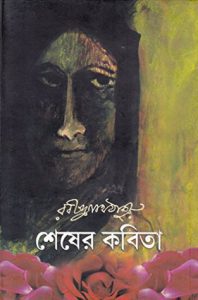
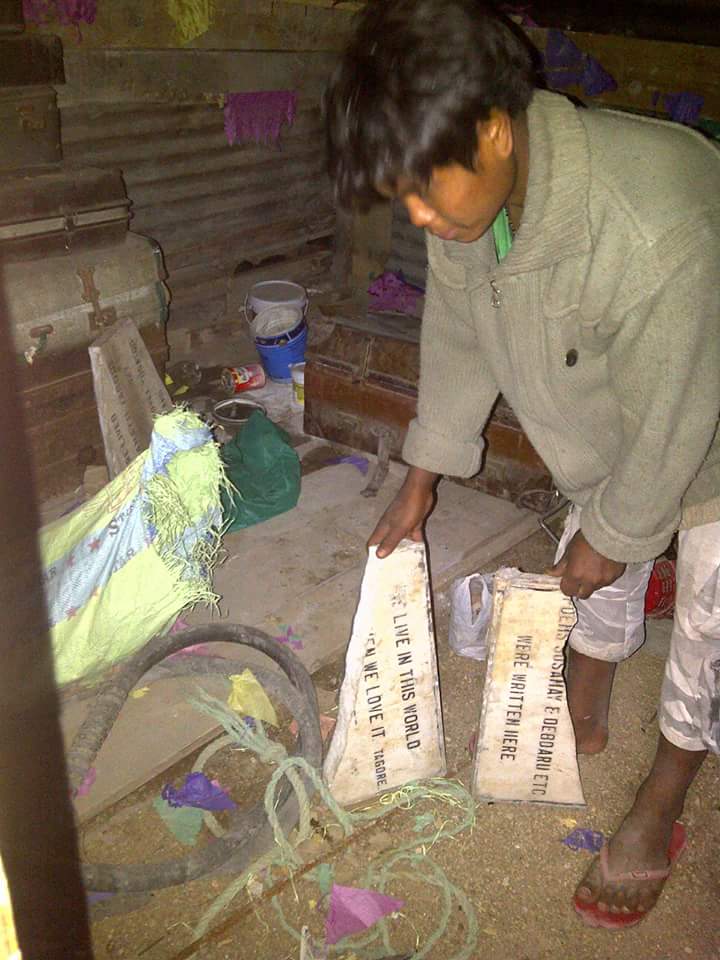
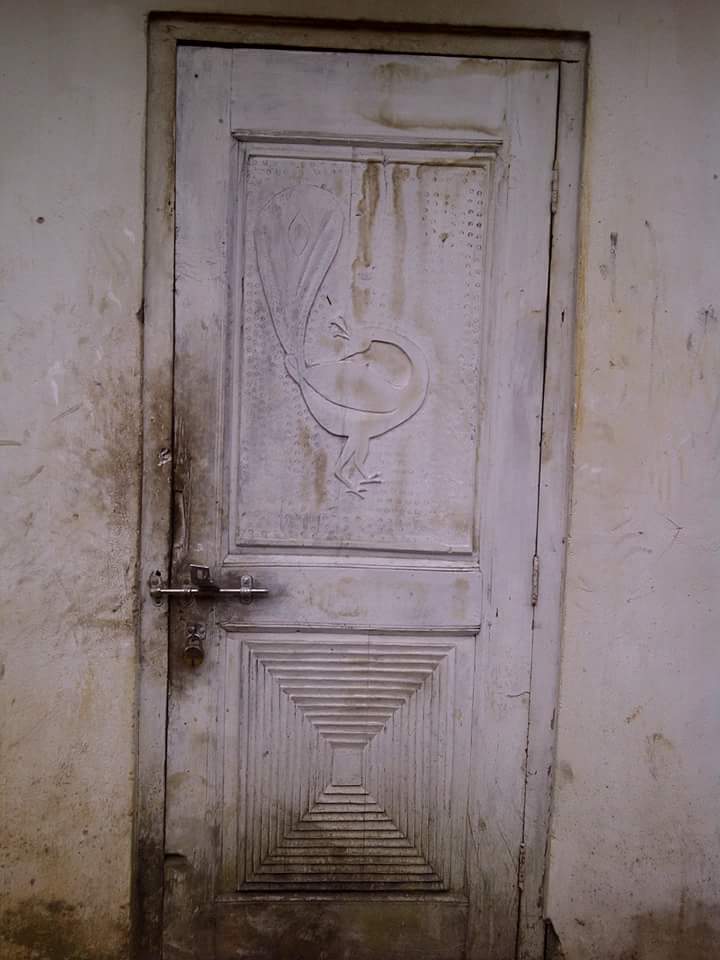

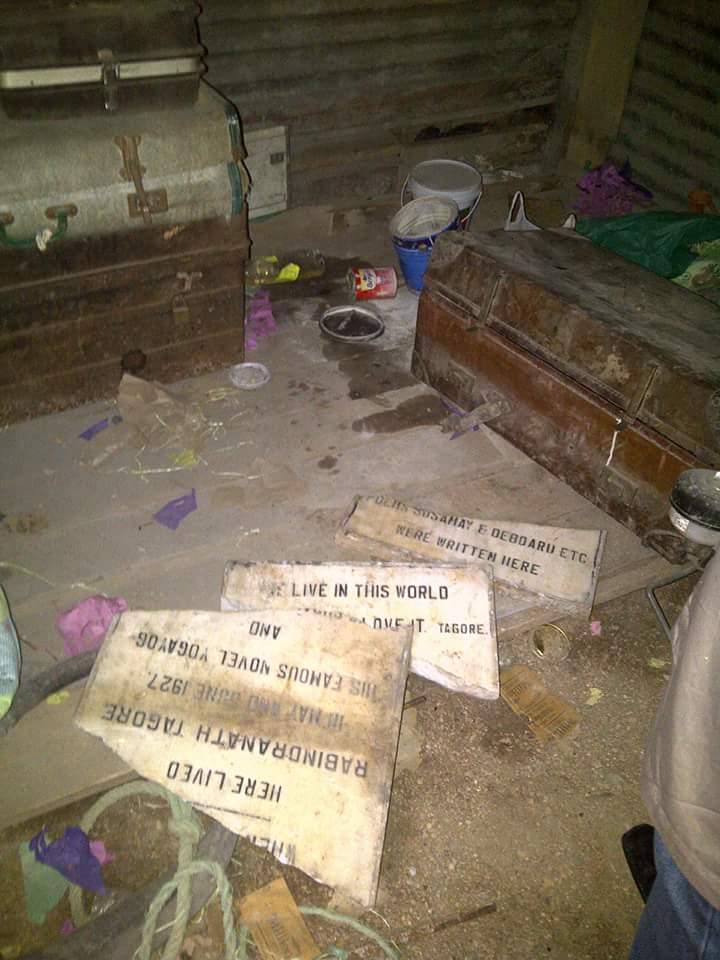
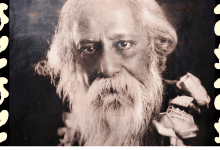



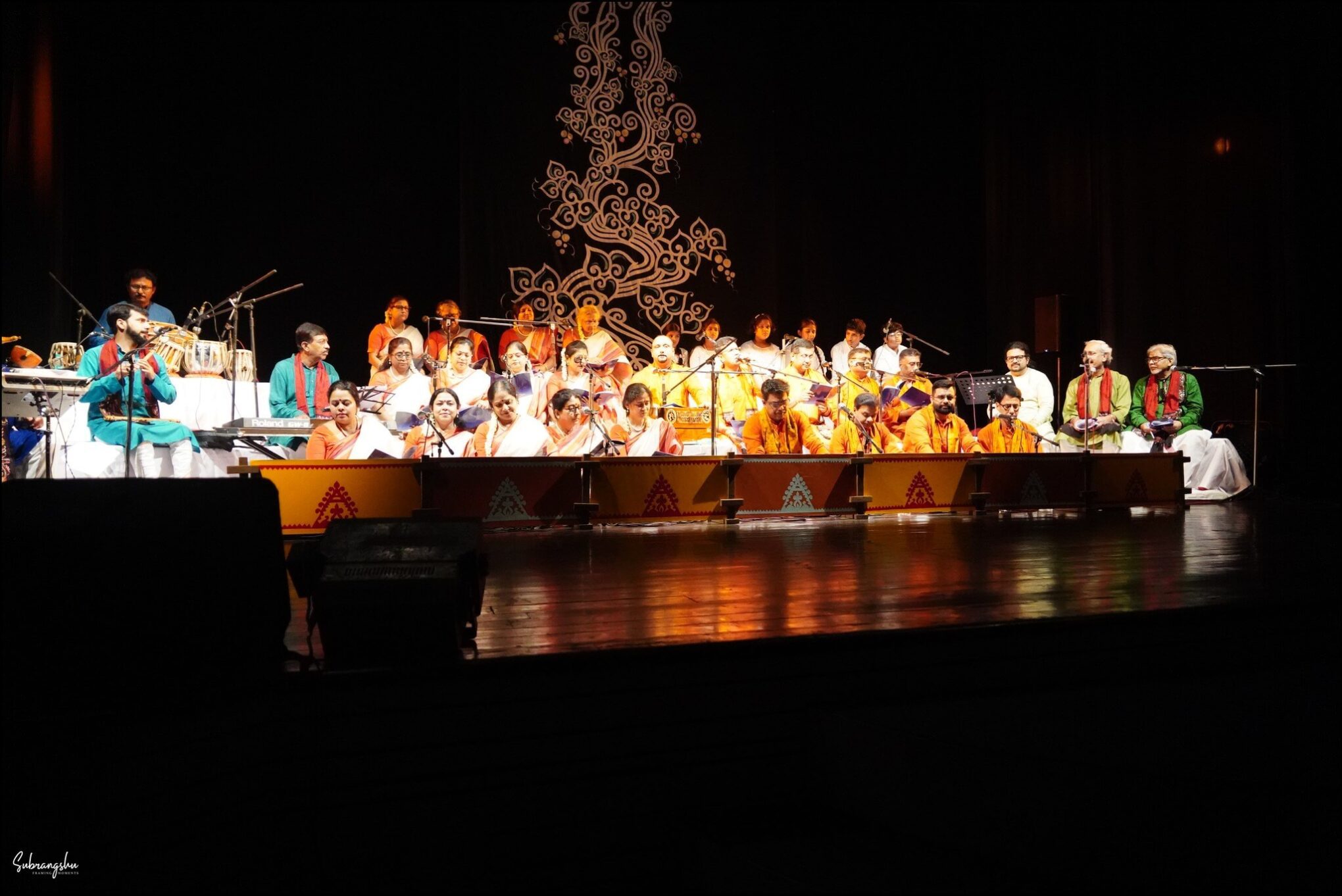
 By
By